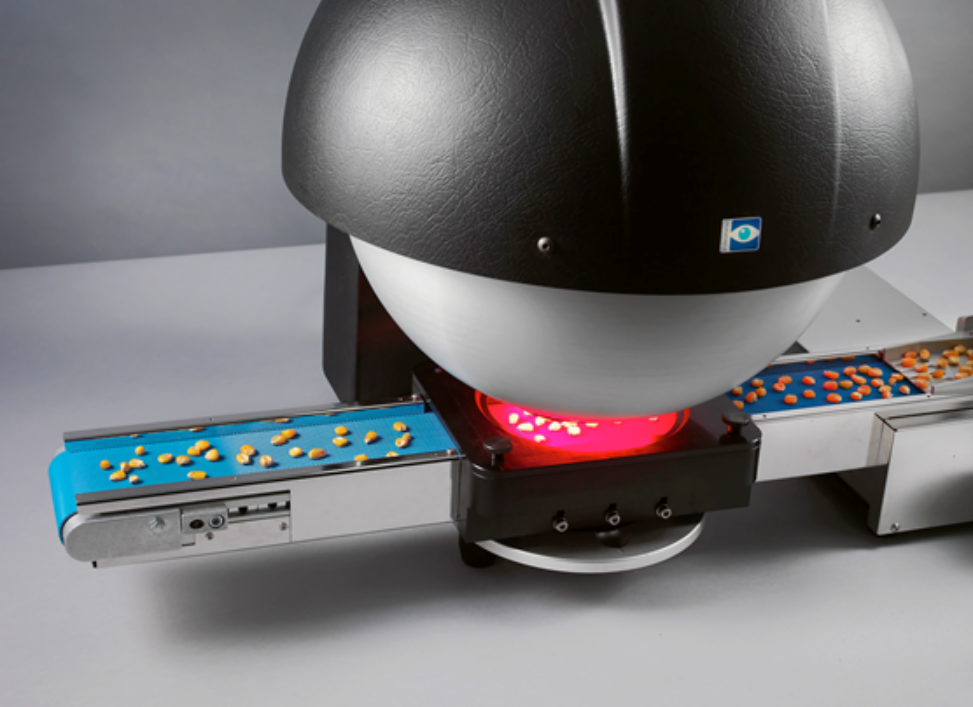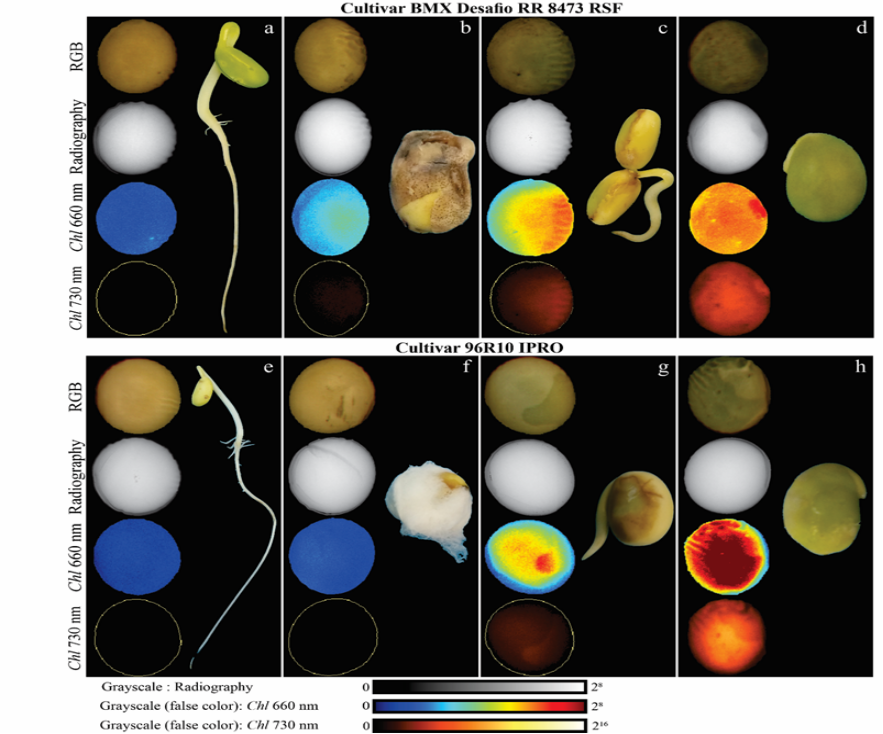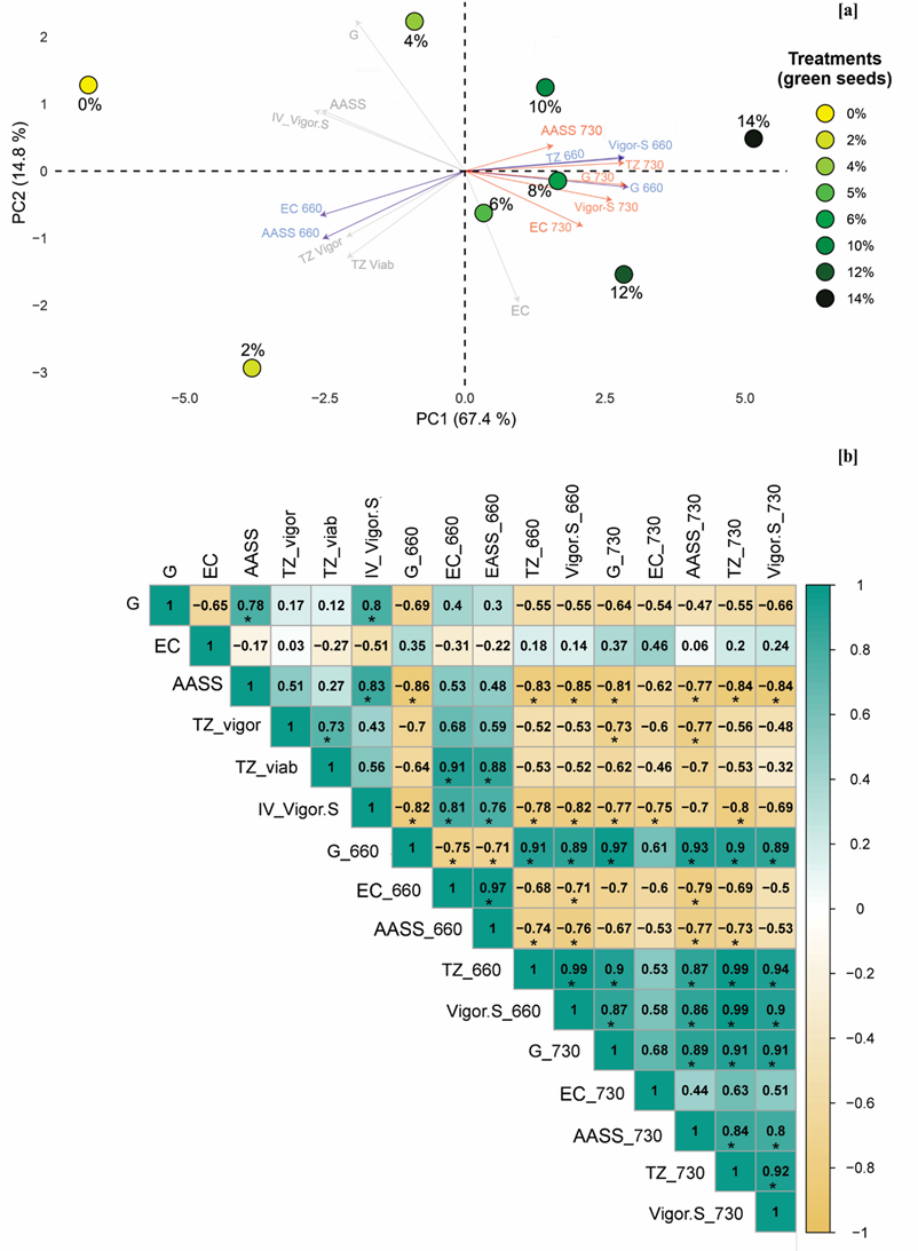品质至上,客户至上,您的满意就是我们的目标
技术文章
当前位置: 首页 > 技术文章
种子表型组学:多光谱种子表型成像系统研究大豆种子叶绿素荧光的多光谱图像定量及其与生理电位的关系
发表时间:2022-07-11 15:31:22点击:942
来源:北京博普特科技有限公司
分享:
Videometer Lab4多光谱种子表型成像系统是丹麦理工大学与丹麦Videometer公司开发,是用于种子研究先进的多光谱表型成像设备,典型客户为ISTA国际种子检验协会、ESTA欧洲种子检验协会、John Innes Centre、LGC化学家集团、奥胡斯大学等等,利用该系统发表的文章已经超过300篇。
Videometer种子表型表型成像系统可测量种子如尺寸、颜色、形状等,间接测定种子参数如种子纯度、发芽百分比、发芽率、种子健康度、种子成熟度、中寿命等。种子活力综合种子活力是种子发芽和出苗率、幼苗生长的潜势、植株抗逆能力和生产潜力的总和(发芽和出苗期间的活性水平与行为),是种子品质的重要指标,具体包括吸涨后旺盛的代谢强度、出苗能力、抗逆性、发芽速度及同步性、幼苗发育与产量潜力。种子活力是植物的重要表型特征,传统检测方法包括低温测试、高温加速衰老测试、幼苗生长测定等。
该系统也可以对细菌、虫卵、真菌等进行高通量成像测量,进行病理学、毒理学或其它研究。对于拟南芥等冠层平展的植物,可以进行自动的叶片计数等。

种子表型组学:多光谱种子表型成像系统研究大豆种子叶绿素荧光的多光谱图像定量及其与生理电位的关系
研究了检测大豆种子叶绿素荧光(CF)的多光谱图像分析技术,以评估CF信号与种子生理潜力之间的关系。用8种处理,分别对应0%、2%、4%、6%、8%、10%、12%和14%的绿色种子,对BMX Desafio RR 8473 RSF和96R10 IPRO两个通过不同种子质量测试的品种进行处理。最初,使用660 nm和730 nm光谱测定种子的CF,然后对同一种子进行发芽、电导率、饱和NaCl溶液加速老化、四氮唑和计算机化幼苗图像分析(活力-S)测试。采用完全随机设计,以及每个处理重复。使用R®软件对发芽、活力和CF测试的数据进行方差分析(ANOVA),并通过Scott Knott测试对均值进行分组(p≤ 0.05). 计算评估中所有组合的皮尔逊线性相关系数(r),通过t检验确定r值的显著性(p≤ 0.05),并对主成分进行多变量分析。绿色种子比例的增加有助于叶绿素荧光信号的增加,并与种子生理质量负相关;样品中绿色种子含量超过4%会导致生理潜力显著下降。因此,通过多光谱图像检测到的叶绿素荧光与大豆种子的生理潜力呈负相关。
索引项:
叶绿素保留;甘氨酸(L.)Merrill;绿色种子;种子活力;光谱学


Figure 3 Soybean seeds with increasing levels of retained chlorophyll, obtained from RGB (Red-Green-Blue) images of internal morphology with the same seeds observed in radiography and chlorophyll fluorescence signals detected by multispectral images at 660 nm (Chl 660 nm) and 730 nm (Chl 730 nm), respectively. In the multispectral images of the soybean seeds, transformed into color map based on gray levels, the hues of the colors dark blue (660 nm, of VideometerLab) and black (730 nm, of SeedReporter) represent the seeds with “yellow” seed coat and embryo, whose chlorophyll was degraded and, for that reason, have low chlorophyll fluorescence signals; the hues with a tendency toward intense red indicate the “greenish” seeds, whose chlorophyll is retained in the seed coat and embryo and, therefore, express greater signals of chlorophyll fluorescence. a; e: normal soybean seedling resulting from yellow seed; b; f: dead seed, with mechanical damage, covered by fungal mycelium and weak signals of chlorophyll fluorescence; c; g: abnormal soybean seedling originating from seed with partial chlorophyll retention; d; h: dead seed resulting from green coloring, which indicates a high level of retained chlorophyll.
Quantification of chlorophyll fluorescence in soybean seeds by multispectral images and their relationship with physiological potential
Abstract
The multispectral image analysis technique to detect chlorophyll fluorescence (CF) in soybean seeds was studied to assess the relationship between CF signals and seed physiological potential. Eight treatments, corresponding to 0%, 2%, 4%, 6%, 8%, 10%, 12%, and 14% green seeds, were used on two cultivars, BMX Desafio RR 8473 RSF and 96R10 IPRO, which passed through different seed quality tests. Initially, the CF of the seeds was determined using 660 nm and 730 nm spectra, and then the germination, electrical conductivity, accelerated aging with saturated NaCl solution, tetrazolium, and computerized seedling image analysis (Vigor-S) tests were performed on the same seeds. A completely randomized design was used, as well as replications of each treatment. Analysis of variance (ANOVA) was performed on the data from germination, vigor, and CF tests using the R® software, and the means were grouped by the Scott-Knott test (p ≤ 0.05). Pearson’s linear correlation coefficients (r) were calculated for all combinations among the evaluations with significance of the r values determined by the t-test (p ≤ 0.05), and multivariate analysis of the principal components was performed. Proportional increases in green seeds contribute to an increase in chlorophyll fluorescence signals and have a negative correlation with seed physiological quality; levels above 4% green seeds in the samples result in marked losses in physiological potential. Therefore, the chlorophyll fluorescence detected through multispectral images is inversely related to the physiological potential of soybean seeds.
Index terms:
chlorophyll retention; Glycine max (L.) Merrill; green seeds; seed vigor; spectroscopy
相关阅读
Videometer种子表型组学:多光谱成像作为菠菜种子健康检测的潜在工具
Videometer种子表型组学:多光谱图像分析在种子种质库管理中的应用
Videometer种子表型组学:利用可见光、近红外多光谱和化学计量学对不同番茄种子品种的分类
Videometer种子表型组学:使用多光谱成像和化学计量学方法在线鉴别水稻种子
Videometer种子表型组学:使用多光谱成像预测蓖麻种子的活力
Videometer种子表型组学:甜菜种子加工损伤的多光谱图像分类
种子表型组学:利用多光谱成像和化学计量学方法对大豆种子进行无损鉴别
种子表型组学:Videometer多光谱成像种子质量评估的新工具
种子表型组学:基于可见-近红外多光谱图像数据的偏最小二乘判别分析检测菠菜种子的发芽能力和胚芽长度
种子表型组学:使用灰度共生矩阵和机器学习技术识别单倍体玉米种子
种子表型组学:通过射线照相和多光谱图像分析测定小麦种子中的侵染
种子表型组学:盐胁迫下九个高羊茅品种的种子萌发和幼苗生长参数
种子表型组学:基于多光谱和共振成像技术的麻疯树种子健康分析新方法
种子表型组学:多光谱成像结合多变量分析的单株紫花苜蓿种子品种鉴别
种子表型组学:通过多光谱成像分析对自然老化的紫花苜蓿种子进行无损鉴定
种子表型组学:自动荧光光谱成像作为一种快速、无损和可靠地评估大豆种子质量的创新方法
种子表型组学:一种利用新兴光学技术和人工智能的方法作为新标记评估花生种子质量